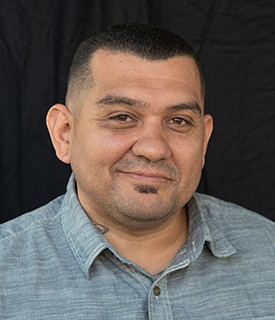Borderline personality disorder (BPD) and posttraumatic stress disorder (PTSD) are complex mental health concerns with potentially debilitating symptoms. When someone experiences both disorders at the same time, the impact can be devastating.
Thankfully, both borderline personality disorder and PTSD are treatable. In the past, mental health professionals have disagreed about the best way to treat people who have co-occurring BPD and PTSD. More recently, researchers have investigated approaches that appear to be effective at helping individuals whose lives have been disrupted by the simultaneous presence of these two conditions.
The Scope of the Problem
Fewer than two out of every 100 people will develop borderline personality disorder, while posttraumatic stress disorder affects less than 7% of the population. However, with the United States currently serving as home to about 332 million people, even a small percentage can be a large group.
Here’s a quick look at the prevalence of BPD and PTSD, both alone and co-occurring:
- Borderline personality disorder (BPD): Experts estimate that the lifetime prevalence of borderline personality disorder among the general public is about 1.6%. Among the population of people who seek overnight/immersive psychiatric care, the prevalence of BPD is about 20%. About 75% of people who are diagnosed with BPD are female.
- Posttraumatic stress disorder (PTSD): The National Institute of Mental Health (NIMH) has reported that the past-year prevalence of PTSD is about 3.6% and the lifetime prevalence of this disorder is about 6.8%. As with borderline personality disorder, diagnoses of PTSD are more common among women (5.2%) than among men (1.8%).
- Co-occurring borderline personality disorder and PTSD: The rates of both BPD and PTSD are much higher among individuals who have developed one of these disorders. According to a May 2010 study in the Journal of Psychiatric Research, about 24% of people who have PTSD also have borderline personality disorder. This article also noted that about 30% of people who have borderline personality disorder are also diagnosed with PTSD.
Possible Causes of Co-Occurring BPD & PTSD
When exploring similarities among people who develop both borderline personality disorder and PTSD, the researchers who conducted the May 2010 Journal of Psychiatry Research study found that certain forms of childhood trauma seem to be most common.
The research team reached this conclusion after reviewing data from more than 34,000 U.S. adults that had been gathered during the National Epidemiologic Survey on Alcohol and Related Conditions (NESARC) in 2003-2004. The team reviewed the prevalence of the following five types of childhood trauma among the NESARC respondents:
- Sexual abuse
- Physical abuse by a parent or caretaker
- Physical attack or abuse by someone other than a parent or caretaker
- Neglect by a parent or caretaker
- Witnessing violence in the home
The research team found that respondents who had both borderline personality disorder and PTSD were more likely to have a history of childhood trauma (which they defined as occurring before age 16) than were those who only had one of the disorders.
“PTSD-BPD comorbidity was … associated with an increased likelihood and severity of exposure to repeated childhood traumatic events,” the team wrote. “Individuals with comorbid PTSD-BPD were significantly more likely than those with PTSD alone and BPD alone to have experienced each of the repeated childhood traumatic event variables examined.”
Negative Effects of Co-Occurring BPD & PTSD
In addition to struggling with a greater number of symptoms, people who have both borderline personality disorder and PTSD are also likely to experience more intense symptoms and more acute suffering in general.
As reported in a June 2021 article in the journal Clinical Psychology Review, the potential effects of having both BPD and PSTD include the following:
- Greater severity of both BPD and PTSD symptoms
- Heightened risk of suicide
- Elevated likelihood of developing additional mental health concerns
- Lower rates of remission from BPD
- Higher degree of overall psychological distress
- Diminished quality of life
- Greater involvement with mental health and emergency services
Given the profound negative impact that co-occurring borderline personality disorder and PTSD can have on a person’s life, effective professional care is essential. However, as noted earlier in this post, clinicians have not always agreed on the best course of treatment for people who have both of these disorders.
As the authors of the June 2021 Clinical Psychology Review noted, some types of treatment that have proved effective for borderline personality disorder may not adequately address the needs of patients who also have PTSD. Conversely, certain services that can improve quality of life for people who have PTSD may not address the concerns that are characteristic of borderline personality disorder.
Treatment Options for Co-Occurring BPD & PTSD
The challenge of developing an appropriate comprehensive treatment plan for a person with both BPD and PTSD was addressed in a September 2014 article by Melanie S. Harned, PhD, in the journal Current Treatment Options in Psychiatry.
“Historically, BPD has often been viewed as a contraindication for trauma-focused treatment due to concerns that such treatment would lead to symptom worsening (e.g., increased suicidality),” Harned wrote. “Over the past decade, however, research has provided convincing evidence that PTSD can be safely and effectively treated among individuals with BPD of varying levels of severity.”
Harned’s article included an assessment of six treatment approaches for people with PTSD and co-occurring borderline personality disorder:
- Prolonged exposure (PE) therapy
- Cognitive processing therapy (CPT)
- Dialectical behavior therapy (DBT)
- Dialectical behavior therapy for PTSD (DBT-PTSD)
- Dialectical behavior therapy with the DBT prolonged exposure protocol (DBT + DBT PE)
- Narrative exposure therapy (NET)
Prolonged Exposure (PE) Therapy
- Prolonged exposure therapy is a form of cognitive behavioral therapy (CBT). PE has been endorsed by the American Psychological Society for helping people overcome distress that is prompted by reminders of past trauma. A course of PE typically includes eight to 15 weekly sessions.
- Harned reported that PE can be a beneficial form of care for people who have a primary diagnosis of PTSD and “mild or sub-threshold BPD,” which she defined as BPD without suicidal behaviors, self-harm, or other especially severe symptoms.
Cognitive Processing Therapy (CPT)
- As with PE, cognitive processing therapy is a form of CBT that focuses on helping people address the impact of painful thoughts related to a past traumatic experience. This typically occurs over 12 sessions, with each session lasting 60-90 minutes. The National Center for PTSD describes CPT as “one of the most effective types of treatment for PTSD.”
- Harned grouped CPT with PE as services that appear to be best for people who have PTSD and a mild form of borderline personality disorder.
Dialectical Behavior Therapy (DBT)
- DBT was developed in the early 1990s by Dr. Marsha Linehan, who at the time was working with women who had borderline personality disorder and who were engaging in suicidal and self-harming behaviors.
- DBT focuses on helping people develop skills in four areas: mindfulness, interpersonal effectiveness, emotion regulation, and distress tolerance. To build these skills, patients participate in three types of sessions: skills training groups, individual psychotherapy, and telephone consultations.
- Harned indicated that long-term DBT may be ideal for people who have PTSD and severe symptoms of borderline personality disorder.
Dialectical Behavior Therapy for PTSD (DBT-PTSD)
- As its name suggests, DBT-PTSD is an adapted version of DBT. It is primarily used to treat people who have a history of childhood abuse, particularly sexual assault. It is typically provided in a three-phase approach across a 12-week period.
- According to Harned, studies indicate that DBT-PTSD may be most appropriate for adult women who have moderate borderline personality disorder, but who do not have a history of recent suicide attempts.
Dialectical Behavior Therapy with DBT Prolonged Exposure Protocol (DBT + DBT PE)
Harned developed the DBT PE protocol to help people who have PTSD, have been engaging in life-threatening behaviors, and also have significant co-occurring concerns such as borderline personality disorder. She describes the approach as a three-stage effort:
- The first stage employs DBT to help clients regain control of their behaviors.
- The second stage uses DBT PE to address the PTSD symptoms that the clients have been experiencing.
- The third stage returns to traditional DBT, with the goal of addressing symptoms of borderline personality disorder or other challenges that remain after the client’s PTSD has been addressed.
Narrative Exposure Therapy (NET)
- NET is a short-term form of trauma-focused cognitive behavioral therapy. A March 2019 article in the European Journal of Psychotraumatology indicates that it may be best suited for individuals who have lived through multiple traumatic experiences, a population that includes refugees and other displaced persons.
- During NET sessions, clients work with trained professionals to create a written autobiographical narrative, with the goal of minimizing their distress by gaining new perspectives on past traumatic events and placing these events in context with their non-traumatic memories.
- In 2016, a small pilot study found that NET “was associated with positive effects on PTSD and BPD symptom severity as well as secondary outcome measures, including depression, dissociation and quality of life.”
Get Help for Co-Occurring BPD & PTSD
If someone in your life has been struggling with both borderline personality disorder and PTSD, Crownview Psychiatric Institute is here to help. CPI offers a dynamic array of customized treatment services within a supportive community-based environment. To learn more about our programming, or to schedule an intake assessment, please call us today.

 Kimberly Gilkey, RADT-1
Kimberly Gilkey, RADT-1 Timothy Wieland
Timothy Wieland David Abram
David Abram Mark Melden, DO/DABPN
Mark Melden, DO/DABPN Jeffrey Klein
Jeffrey Klein Nathan Kuemmerle, MD
Nathan Kuemmerle, MD Laura Hopper, Ph.D.
Laura Hopper, Ph.D. Rebecca McKnight, PsyD
Rebecca McKnight, PsyD Milena Dun, PhD
Milena Dun, PhD Brieana Turner, MA, LMFT
Brieana Turner, MA, LMFT Brittany Perkins, MA, LMFT
Brittany Perkins, MA, LMFT Joanne Talbot-Miller, M.A., LMFT
Joanne Talbot-Miller, M.A., LMFT Alexis Weintraub, PsyD
Alexis Weintraub, PsyD Kathleen McCarrick, MSW, LSW
Kathleen McCarrick, MSW, LSW Christina Lam, N.P.
Christina Lam, N.P. John P. Flores, SUDCC-IV-CS, CADC II
John P. Flores, SUDCC-IV-CS, CADC II David Dalton, Facility Operations Director
David Dalton, Facility Operations Director Amy Thompson
Amy Thompson Kelly Schwarzer
Kelly Schwarzer Jovanna Wiggins
Jovanna Wiggins Alexandria Avalos, MSW, ACSW
Alexandria Avalos, MSW, ACSW Michelle Ertel
Michelle Ertel Emily Skillings
Emily Skillings Amanda Irrgang, Registered Dietitian Nutritionist (RDN)
Amanda Irrgang, Registered Dietitian Nutritionist (RDN) Gianna Melendez
Gianna Melendez Jodie Dahl, CpHT
Jodie Dahl, CpHT Jordan Granata, PsyD
Jordan Granata, PsyD